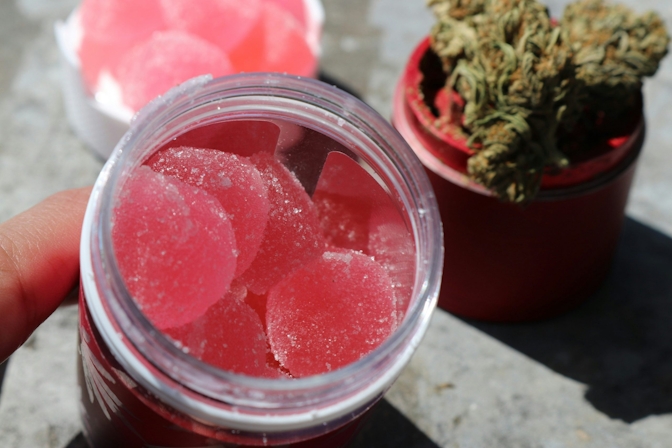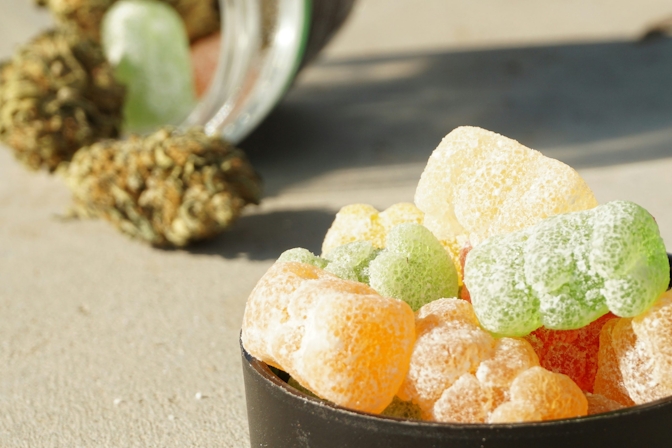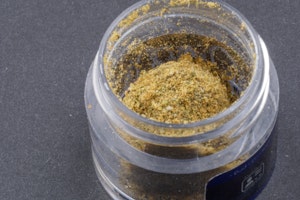
Herb
Why Your THC Edible Stops Working Over Time (And How to Fix It)
THC gummy lost its kick? Let's bring it back.
THC edibles are a go-to for many cannabis consumers looking for long-lasting relief, better sleep, or a more body-centered high. Whether it’s gummies, chocolates, or baked goods, edibles offer discreet, tasty, and potent effects. But if you’ve noticed your favorite treat just doesn’t hit like it used to, you’re not imagining it. Edible THC tolerance is a real thing.
Over time, your body adapts to the cannabinoids you consume. That means the same THC gummy edibles that once felt perfect may start feeling underwhelming after a while. Let’s break down how tolerance builds, why it happens, and how to get your edibles working for you again.
The Science Behind THC Edibles and Your Body

Elsa Olofsson / Unsplash
THC edibles don’t just hit differently; they work differently than smoking or vaping cannabis. Edible cannabis products have to travel through your digestive system before they kick in. That means the high takes longer to arrive, but when it does, it often feels stronger and lasts longer.
To really understand how edibles with THC affect you, it helps to know what’s happening inside your body. This includes how your liver processes edibles and how your cannabinoid receptors respond over time. This is where tolerance begins to build, and why your favorite gummies, chocolates, or cannabis-infused food might not hit like they used to.
How Edible THC Processing Works
When you eat a cannabis-infused edible, the THC doesn’t go straight to your brain. First, it travels through your digestive system and then your liver, a process known as first-pass metabolism. This is where your body converts THC into a compound called 11-hydroxy-THC, which is known for its longer-lasting and often more intense effects.
That’s why cannabis edibles can feel stronger and last longer than smoking cannabis or vaping. The conversion from THC to 11-hydroxy-THC in the body also explains why frequently consuming those tasty THC edibles can build tolerance more rapidly. Your liver gets efficient at processing cannabis extracts, and the effects start fading faster or feeling weaker overall.
Your Endocannabinoid System and Tolerance
Your body’s endocannabinoid system (ECS) comprises CB1 and CB2 receptors, which help regulate mood, appetite, memory, and pain perception. When you regularly consume cannabis, especially in edible form, those receptors can become less responsive over time. This is called receptor downregulation.
As a result, cannabinoids like THC don’t affect you the same way they used to. That’s when you start needing higher doses for the same effect, and it’s often the point where many users realize their favorite cannabis edibles have stopped working.
Why Edibles with THC Stop Working: The Tolerance Timeline

Kawe Rodrigues / Unsplash
If your go-to edibles with THC don’t seem to hit the same anymore, you’re not imagining it. Over time, regular cannabis use, primarily through potent, long-lasting products like THC edibles, can lead to noticeable changes in how your body reacts.
This is called tolerance, and it happens when your system becomes less sensitive to THC’s effects. Whether you’re using THC gummy edibles, baked goods, or cannabis-infused drinks, understanding the timeline of how tolerance builds can help you reset your experience and make smarter choices about your dosage and frequency.
The Stages of Edible Tolerance Development
Weeks 1–2: You’re feeling it. This is when edibles with THC are most effective. Expect that classic heightened sensory perception, increased appetite, and a lasting body high.
Weeks 3–4: Effects begin to dull. The same dose may not have as much impact, and you may need to increase the milligrams.
Month 2+: Significant tolerance sets in. You may feel little to no effect from your go-to THC gummies, hard candies, or other infused foods and beverages. Long-term cannabis use can lead to a plateau where most edibles barely register a psychoactive effect.
Factors That Accelerate Tolerance

Elsa Olofsson / Unsplash
Several factors can speed up this process:
- Frequency of use: Daily or near-daily use accelerates tolerance, especially when high doses are taken without breaks.
- Individual metabolism: People with a faster metabolism may process THC edibles better. This can lessen the effects of THC edibles over time.
- Other cannabis products: Combining edibles with smoking, vaping, or cannabis oil increases your overall exposure and can amplify tolerance.
- Body weight and digestion: Your digestive health and the amount of food in your system when consuming make a difference in how edibles affect you. Taking edibles on an empty stomach can speed up absorption, which may result in their effects hitting harder and faster.
Common Mistakes That Worsen THC Gummy Edibles Tolerance

Elsa Olofsson / Unsplash
Even the best THC gummies can lose their punch if you’re not careful with how you use them. Many consumers unknowingly build tolerance. They do this by making small mistakes, like increasing the dose too quickly or forgetting to take breaks between servings.
When it comes to THC gummy edibles, consistency and mindful consumption go a long way. Staying away from these common mistakes can help you manage your tolerance. This way, you can enjoy your favorite cannabis edibles without overdoing it.
Dosing Errors That Backfire
One common mistake by recreational cannabis consumers is gradually increasing their dose every time they feel the effect is lessening. This can build tolerance faster than you think and make even the strongest THC gummies feel weak.
Another issue is taking edibles too often without breaks. Unlike smoking cannabis, edible THC stays in your system longer. Taking more before your body has a chance to reset can lead to dull effects and more frequent dosing.
Some people also redose too soon. Because most edibles take a while to kick in, taking more after 30 minutes can result in too much THC hitting all at once. That not only increases tolerance but can also lead to unpleasant experiences like anxiety or grogginess.
Mixing different cannabis products, like edibles, concentrates, or tinctures, without tracking how much THC you’re using, is another way tolerance creeps in.
Bottom line: Start low, go slow, and give your body time between doses. It’ll help you keep your tolerance in check and get more from your cannabis-infused edibles.
3 Methods to Reset Your Edible Tolerance

Crystalweed / Unsplash
If your favorite edible cannabis products aren’t hitting like they used to, it might be time for a tolerance reset, also known as a T-break. Using THC edibles for a long time can reduce their effects. Even if you take more, it often doesn’t help.
Fortunately, there are effective ways to regain sensitivity to edible THC without quitting cannabis altogether.
The Tolerance Break (T-Break)
Taking a break from edible THC gives your ECS time to recover. Here’s how to do it right:
- 48–72 hours: Minimal reset, helpful for those who use edibles 1-3 times a week.
- 1–2 weeks: Ideal for regular users looking to regain sensitivity.
- 2+ weeks: Recommended for those with long-term use or very high tolerance levels.
You might notice temporary changes in sleep, mood, or cravings; these are normal substance use withdrawal symptoms and typically resolve within days.
Microdosing Reset
Instead of quitting cold turkey, some people slowly taper down with low-dose microdosing:
- Week 1: Stick to 1.25mg to 2.5mg THC every other day.
- Week 2: Increase only if necessary, aiming for a maximum of 5 mg.
This approach supports your system without overloading your receptors and works well with precise dosing products, such as tinctures, oils, or measured gummies. The goal is to determine your new minimum effective dose and resist the urge to revert to your old habits.
Consumption Method Rotation
If you’ve been sticking to the same type of THC edibles for a while, like gummies, brownies, chocolates, or other edibles, your body may start to build tolerance faster. One way to reset that pattern is by switching up how you consume cannabis.
Instead of only relying on edibles with THC, try rotating in other consumption methods like smoking cannabis, vaping, or using tinctures. Mixing up your routine keeps things fresh. So if THC gummy edibles aren’t working like they used to, changing how you use cannabis might help you feel the effects more clearly again, without needing to take a complete break.
Final Thoughts

Herb
Cannabis-infused edibles like THC gummies, baked goods, and chocolates are fun, functional, and increasingly popular, but they don’t stay effective forever. Tolerance happens, especially with regular use of marijuana edibles. Whether you’re shopping for edibles online, browsing for the best THC gummies, or figuring out your next store visit, knowing how to manage your tolerance is key to getting the most from your cannabis experience.
Like anything with cannabis plants, balance matters. Keep your routine intentional, give your body breaks when needed, and remember: when it comes to THC, more isn’t always better.
Herb Recommended Products:
READ MORE










